
Scholarly Literature
This is a database of scholarly literature that concentrates currently on natural and engineered selfish genetic elements (gene drives). The latest are shown here.
Disclaimer>

|
Genome Editing 2020: Ethics and Human Rights in Germline Editing in Humans and Gene Drives in MosquitoesG. J. Annas, American Journal of Law and Medicine, 46:143-165. 2020.
G. J. Annas (2020). American Journal of Law and Medicine. doi: 10.1177/0098858820933492. I begin with a discussion of so far disastrously unsuccessful attempts to regulate germline editing in humans, including a summary of the first application of germline genome editing in ... Keywords: Aedes aegypti, optimal control, wolbachia |

|
On Nonlinear Pest/Vector Control via the Sterile Insect Technique: Impact of Residual FertilityM. S. Aronna and Y. Dumont, Bulletin of Mathematical Biology, 82:29. 2020.
We consider a minimalist model for the Sterile Insect Technique (SIT), assuming that residual fertility can occur in the sterile male population. Keywords: Aedes aegypti, optimal control, wolbachia |

|
2-Locus Cleave and Rescue; selfish elements harness a recombination rate-dependent generational clock for self limiting gene driveG. Oberhofer, T. Ivy and B. A. Hay, bioRxiv, 2020.
Self-limiting gene drive allows control over the spread and fate of linked traits. Cleave and Rescue (ClvR) elements create self-sustaining drive and comprise a DNA sequence-modifying enzyme (Cas9-gRNAs, Cleaver) that disrupts an essential gene, and a tightly linked, uncleavable ... Keywords: Aedes aegypti, optimal control, wolbachia |
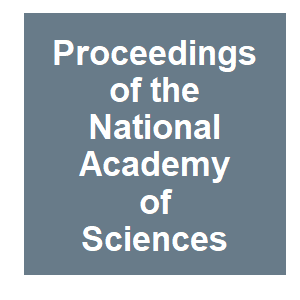
|
Maternal effect killing by a supergene controlling ant social organizationA. Avril, J. Purcell, S. Béniguel and M. Chapuisat, Proceedings of the National Academy of Sciences, 2020.
Supergenes are clusters of linked loci producing complex alternative phenotypes. In a series of experiments, we demonstrate that a supergene controlling ant social organization distorts Mendel’s laws to enhance its transmission to adult offspring. One supergene haplotype is ... Keywords: Aedes aegypti, optimal control, wolbachia |

|
Artificial Selection Finds New Hypotheses for the Mechanism of Wolbachia-Mediated Dengue Blocking in MosquitoesS. A. Ford, I. Albert, S. L. Allen, S. F. Chenoweth, M. Jones, C. Koh, A. Sebastian, L. T. Sigle and E. A. McGraw, Frontiers in Microbiology, 11:1456. 2020.
We recently used experimental evolution to reveal that Wolbachia-mediated dengue blocking could be selected upon in the A. aegypti host and showed evidence that strong levels of blocking could be maintained by natural selection. In this study, we investigate the genetic variation ... Keywords: Aedes aegypti, optimal control, wolbachia |

|
Small-Molecule Control of Super-Mendelian Inheritance in Gene DrivesV. López Del Amo, B. S. Leger, K. J. Cox, S. Gill, A. L. Bishop, G. D. Scanlon, J. A. Walker, V. M. Gantz and A. Choudhary, Cell Reports, 31:107841. 2020.
Summary Synthetic CRISPR-based gene-drive systems have tremendous potential in public health and agriculture, such as for fighting vector-borne diseases or suppressing crop pest populations. These elements can rapidly spread in a population by breaching the inheritance limit of ... Keywords: Aedes aegypti, optimal control, wolbachia |

|
Invasion and maintenance of spore killers in populations of ascomycete fungiI. Martinossi-Allibert, C. Veller, S. L. Ament-Velásquez, A. A. Vogan, C. Rueffler and H. Johannesson, bioRxiv, 2020.04.06.026989. 2020.
We show how ploidy level, rate of selfing, and efficiency of spore killing affect the invasion probability of a driving allele and the conditions for its stable coexistence with the non-driving allele. Our model can be adapted to different fungal life-cycles, and is applied here ... Keywords: Aedes aegypti, optimal control, wolbachia |

|
Role of gene drives in malaria elimination strategy: modeling impact and cost-effectiveness in the Democratic Republic of the CongoN. Metchanun, C. Borgemeister, J. von Braun, M. Nikolov, P. Selvaraj and J. Gerardin, medRxiv, 2020.
The tremendous burden of malaria has led to renewed efforts on malaria elimination and the development of novel tools for application where existing tools fall short. Gene drive mosquitoes, where transgenes and their associated phenotypes are efficiently propagated to future ... Keywords: Aedes aegypti, optimal control, wolbachia |
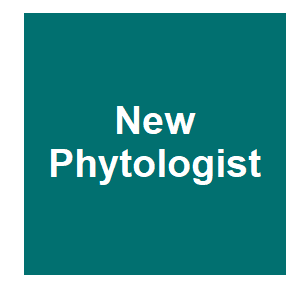
|
Can natural gene drives be part of future fungal pathogen control strategies in plants?D. M. Gardiner, A. Rusu, L. Barrett, G. C. Hunter and K. Kazan, New Phtologist, 2020.
Globally, fungal pathogens cause enormous crop losses and current control practices are not always effective, economical or environmentally sustainable. Tools enabling genetic management of wild pathogen populations could potentially solve many problems associated with plant ... Keywords: Aedes aegypti, optimal control, wolbachia |

|
Translating gene drive science to promote linguistic diversity in community and stakeholder engagementC. Cheung, S. Gamez, R. Carballar-Lejarazú, V. Ferman, V. N. Vásquez, G. Terradas, J. Ishikawa, C. E. Schairer, E. Bier, J. M. Marshall, A. A. James, O. S. Akbari and C. S. Bloss, Global Public Health, 2020.
Information about genetic engineering (GE) for vector control in the United States is disseminated primarily in English, though non-English speakers are equally, and in some geographic regions even more affected by such technologies. Non-English-speaking publics should have equal ... Keywords: Aedes aegypti, optimal control, wolbachia |

|
Development of zygotic and germline gene drives in miceC. Pfitzner, J. N. Hughes, M. A. White, M. Scherer, S. G. Piltz and P. Q. Thomas, bioRxiv, 2020.
Here we investigated the efficiency of CRISPR/Cas9-based gene drives in Mus musculus by constructing "split drive" systems with Cas9 under the control of zygotic (CAG) or germline (Vasa) promoters. Keywords: Aedes aegypti, optimal control, wolbachia |
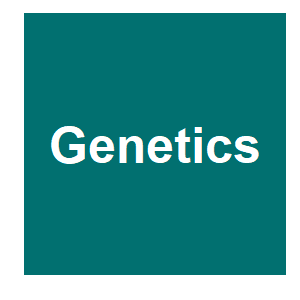
|
Analysis of a Strong Suppressor of Segregation Distorter inDrosophila melanogasterR. G. Temin, Genetics, 215:1085-1105. 2020.
These studies highlight the polygenic nature of distortion and its dependence on a constellation of positive and negative modifiers, provide insight into the stability of Mendelian transmission in natural populations even when a drive system arises, and pave the way for molecular ... Keywords: Aedes aegypti, optimal control, wolbachia |
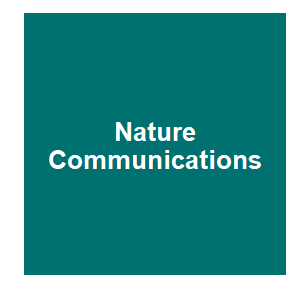
|
Genetic breakdown of a Tet-off conditional lethality system for insect population controlY. Zhao, M. F. Schetelig and A. M. Handler, Nature Communications, 11:3095. 2020.
Genetically modified conditional lethal strains have been created to improve the control of insect pest populations damaging to human health and agriculture. However, understanding the potential for the genetic breakdown of lethality systems by rare spontaneous mutations, or ... Keywords: Aedes aegypti, optimal control, wolbachia |
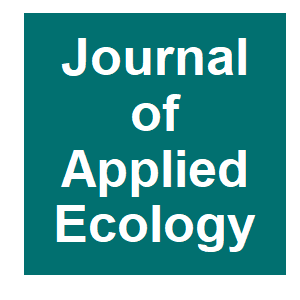
|
Detecting the population dynamics of an autosomal sex ratio distorter transgene in malaria vector mosquitoesP. Pollegioni, A. R. North, T. Persampieri, A. Bucci, R. L. Minuz, D. A. Groneberg, T. Nolan, P. A. Papathanos, A. Crisanti and R. Muller, Journal of Applied Ecology, 11. 2020.
A sex-distorting autosomal transgene has been developed recently in G3 mosquitoes, a laboratory strain of the malaria vectorAnopheles gambiaes.l. Following the World Health Organization guidance framework for the testing of GM mosquitoes, we assessed the dynamics of this ... Keywords: Aedes aegypti, optimal control, wolbachia |

|
Field performance of sterile male mosquitoes released from an uncrewed aerial vehicleJ. Bouyer, N. J. Culbert, A. H. Dicko, M. G. Pacheco, J. Virginio, M. C. Pedrosa, L. Garziera, A. T. M. Pinto, A. Klaptocz, J. Germann, T. Wallner, G. Salvador-Herranz, R. A. Herrero, H. Yamada, F. Balestrino and M. J. B. Vreysen, Science Robotics, 5:10. 2020.
Genetic control methods of mosquito vectors of malaria, dengue, yellow fever, and Zika are becoming increasingly popular due to the limitations of other techniques such as the use of insecticides. The sterile insect technique is an effective genetic control method to manage ... Keywords: Aedes aegypti, optimal control, wolbachia |
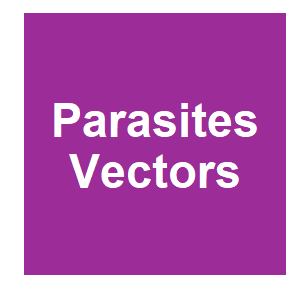
|
The need for new vector control approaches targeting outdoor biting anopheline malaria vector communitiesS. Sougoufara, E. C. Ottih and F. Tripet, Parasites & Vectors, 13:15. 2020.
Since the implementation of Roll Back Malaria, the widespread use of insecticide-treated nets (ITNs) and indoor residual spraying (IRS) is thought to have played a major part in the decrease in mortality and morbidity achieved in malaria-endemic regions. In the past decade, ... Keywords: Aedes aegypti, optimal control, wolbachia |
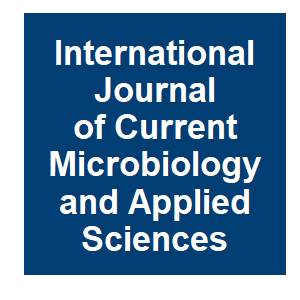
|
Gene Drive: Can this be the Future of Agricultural Pest Management?P. Mondal, U. Mohapatra and M. Ganguly, International Journal of Current Microbiology and Applied Sciences, 9. 2020.
A world free of hunger may be possible when the agricultural production exceeds the global demand for the food. In the era of increasing population, the need for increased food production can be attainable by managing the destructive pests of the agricultural and horticultural ... Keywords: Aedes aegypti, optimal control, wolbachia |

|
Conservation implications of disease controlJ. C. Buck, S. B. Weinstein, G. Titcomb and H. S. Young, Frontiers in Ecology and the Environment, 6. 2020.
Infectious diseases have indelibly altered human history and, in doing so, have shaped the ecology and conservation of the natural world. Attempts to control diseases often result in adverse environmental impacts, including habitat degradation and unintended outcomes such as ... Keywords: Aedes aegypti, optimal control, wolbachia |

|
Meiotic driveA. N. Srinivasa and S. E. Zanders, Current Biology, 30:R627-R629. 2020.
What is meiotic drive? Diploid organisms, like you, have two copies of each autosomal chromosome, one from each parent. Sometimes organisms are heterozygous at a given region, meaning they carry different copies (or alleles) of the DNA sequence on the two homologous chromosomes. ... Keywords: Aedes aegypti, optimal control, wolbachia |

|
Motivations and expectations driving community participation in entomological research projects: Target Malaria as a case study in Bana, Western Burkina FasoN. Barry, P. Toé, L. Pare Toe, J. Lezaun, M. Drabo, R. K. Dabiré and A. Diabate, Malaria Journal, 19:199. 2020.
Most field entomology research projects require active participation by local community members. Since 2012, Target Malaria, a not-for-profit research consortium, has been working with residents in the village of Bana, in Western Burkina Faso, in various studies involving ... Keywords: Aedes aegypti, optimal control, wolbachia |

Contact
David O’Brochta
Foundation for the
National Institutes of Health
geneconvenevi@fnih.org
RSS

